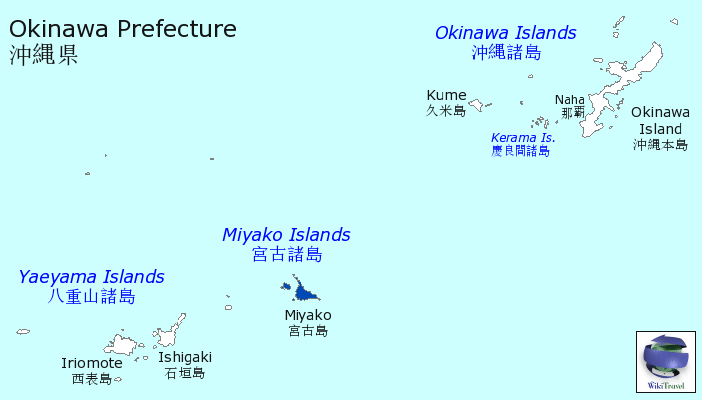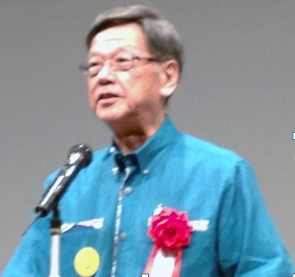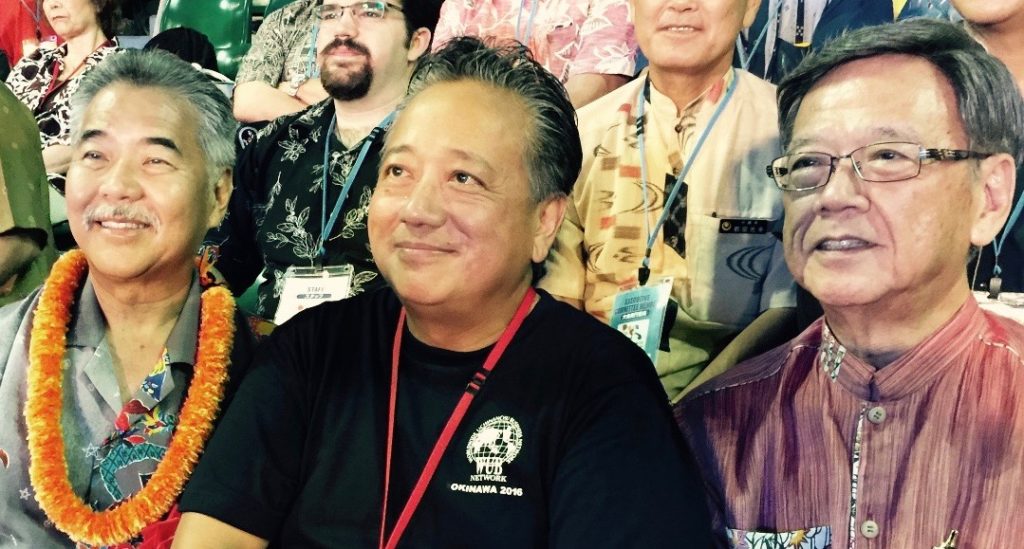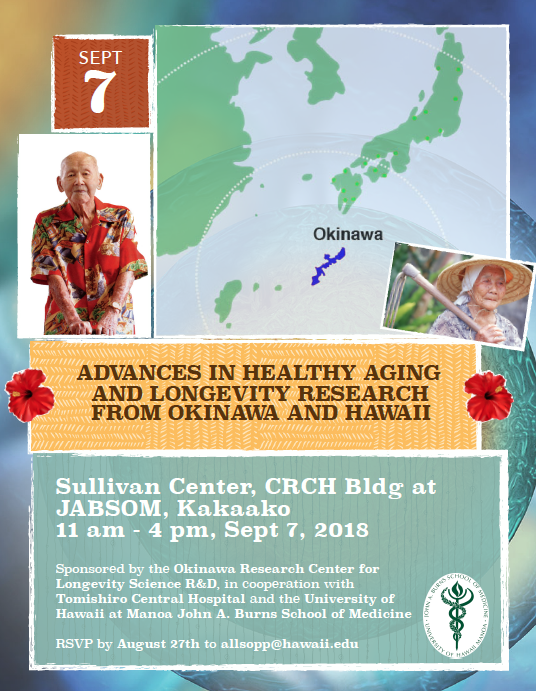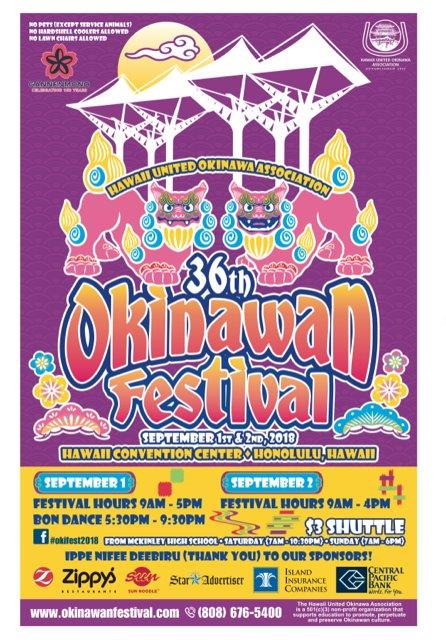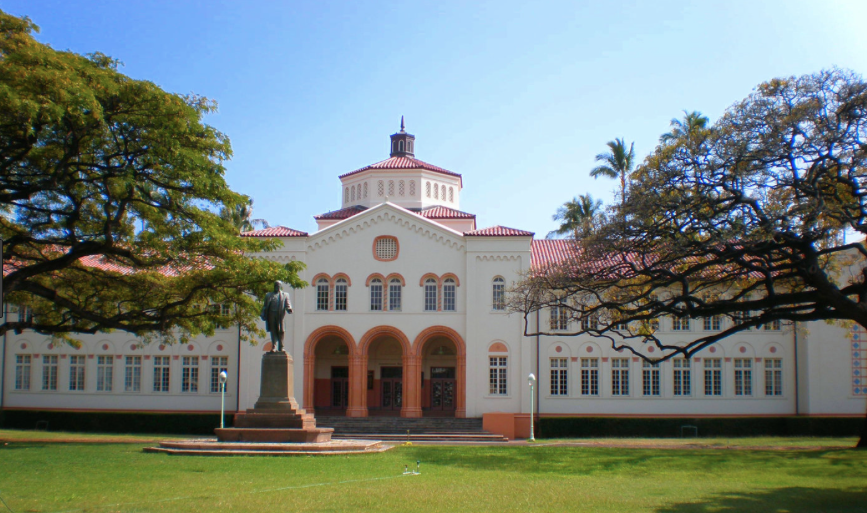In August 2018, a group of middle school and high school students from Miyakojima Island spent a few days in Hawaii to improve their English and learn about Hawaii and American culture.
East-West Center student Yuicihi Harry Masuda and I drove over to the Hawaii Tokai International College out in Kapolei to greet the students and give them a box of ono Leonard’s malasadas.
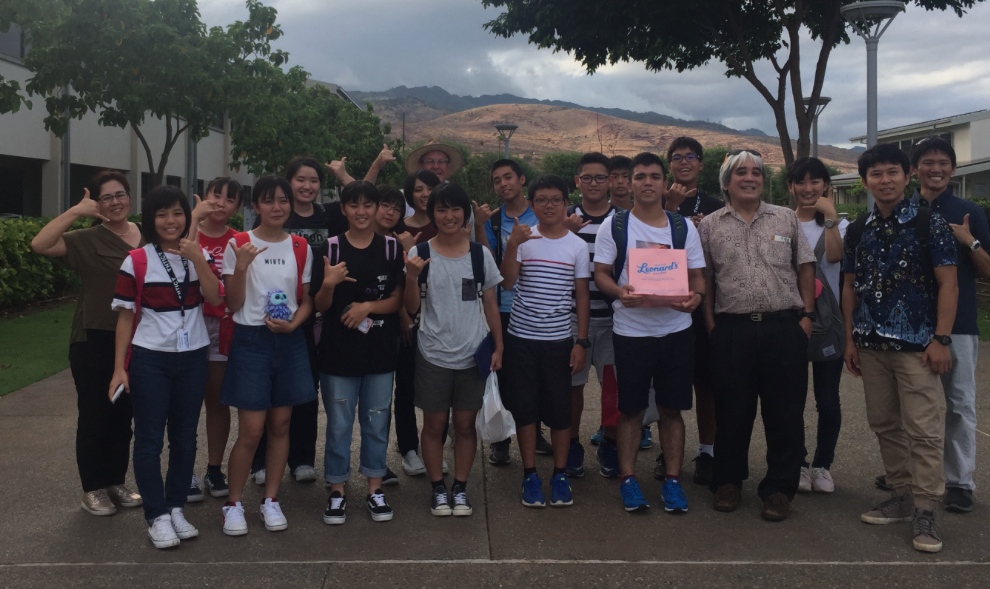
Robert Arakaki and Yuichi Harry Masuda with Miyakojima students. We gave them a box of ono Leonard’s malasadas.
The Ryukyu Kingdom (present day Okinawa prefecture) comprised many islands and multiple languages. The Miyakoan language also Sumafutsu is a language distinct from Nihongo (the language of mainland Japan) and Uchinaaguchi (the language of Okinawa island). Where the people of Okinawa island say “nifedebiru” for “thank you,” the people of Miyakojima say “tandigatandi.” Since coming under Japanese administration, the indigenous language of Miyakojima has been slowly dying out. Today most people in Miyakojima below the age of 60 do not speak Sumafutsu.
Originally from mainland Japan, Harry Masuda moved to Okinawa and learned about Okinawa’s distinctive culture and history. When he attempted to speak to the Miyakojima students in their mother tongue, they waved their hands in embarrassment saying that they spoke Japanese. This cultural and linguistic assimilation presents a serious challenge to the future of Uchinanchu identity in the Uchinanchu/Shimanchu homeland as well among the worldwide Uchinanchu diaspora.
Note: “Uchinanchu” means “people of Uchina or Okinawa Island.” “Shimanchu” means “island people” implying those who belong to the Ryukyus but not necessarily Okinawa Island.
See “Okinawa’s Endangered Languages” also published on the WUB Hawaii website.

